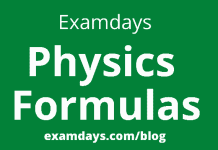Electromagnetic induction is nothing but a process in which a conductor is held in a fixed position, and the magnetic field changes or remains constant as the conductor moves. This results in a voltage or EMF (electromotive force) being created across the electrical conductor.
Electromagnetic induction was invented by Michael Faraday in 1831 and independently and almost simultaneously by Joseph Henry in 1832. Faraday discovered electromagnetic induction and demonstrated it with a copper coil around a toroidal piece of iron and a galvanometer (an instrument used to show electrical current) as a magnet. As the magnet moves toward the coil, an EMF is created, moving the gauge on the galvanometer.
Electromagnetic Induction
The discovery of electromagnetic induction is a fundamental principle in understanding and using electricity. James Clerk formulated Maxwell Faraday’s mathematical description of induction, later known as the Maxwell-Faraday equation.
Facts connecting electricity and magnetism:
- A magnetic field surrounds every electric current.
- Fluctuating magnetic fields are created around alternating currents.
- Faraday’s law states that a magnetic field causes an electric current to flow in conductors placed inside them.
Faraday’s laws of Electromagnetic Induction:
In 1831 Michael Faraday developed two fundamental laws of electromagnetic induction. These laws are known as Faraday’s first law and Faraday’s second law of electromagnetic induction. These two laws describe how a changing magnetic field produces an EMF in a moving conductor.
Types of Electromagnetic Induction
- Faraday’s First Law of electromagnetic induction:
The first law of Faraday states that:
When a conductor is placed in a periodically varying magnetic field, an e.m.f. (electromotive force) is induced across the conductor. An induced current is produced if a conductor is closed to form a circuit.
An equation that mathematically describes electromagnetic induction is Faraday’s law, which states that any change in the magnetic environment of a coiled wire induces a voltage (EMF). Faraday discovered several ways to change the magnetic field strength: moving a magnet through a coil of wire and a coil through a magnetic field. The following equation describes the voltage (EMF) produced in a coil of wire:
EMF = −N(Δ(BA)/Δt)
where
N is the number of wire turns
Δ(BA) is the change in magnetic flux
Δt is the change in time
Electromagnetic Induction Applications
- Faraday’s second law of electromagnetic induction:
This law is EMF. It is produced by varying magnetic fields in the following manner:
EMF. The induced in a conductor equals the rate of change of flux associated with the conductor.
In practice, this law can be written as: ε = dΦdt
Here, ε is the measure of e.m.f. Induced, Φ is the value of the magnetic flux passing through the surface, and t is the time it takes for the flux to change. Since we usually have magnetic flux passing through several loops simultaneously, the general equation becomes: ε = NdΦdt, where N is the number or thickness of the loops.
Applications of Faraday’s Laws of Electromagnetic Induction:
Faraday’s laws are widely used in many fields of electrical engineering, such as electrical machines, measuring instruments, medicine for disease diagnosis, etc. Some typical applications of Faraday’s laws are:
- Equipment, such as transformers, is based on Faraday’s law.
- The electricity production by a generator is also based on Faraday’s laws of electromagnetic induction.
- Faraday’s laws also underlie the operation of many other appliances, such as induction cookers, electromagnetic flow meters, electric guitars, electric violins, etc.
Lenz’s Law of Electromagnetic Induction:
Lenz’s Law states, “The polarity of the induced emf gives a current that opposes the change in magnetic flux that produced it.”
Lenz’s law is based on Newton’s third law and the principle of energy conservation. This is the simplest way to determine the direction of the induced current. Lenz’s law is named after Emil Lenz. There are also many Lenz Law applications. The principle of Lenz’s law is used in metal detectors, eddy current balances, card readers, AC generators, and more.
Lenz’s Law Formula;
Emf=−N(Δϕ/Δt)
where,
Emf = induced voltage (or electromotive force)
N = number of loops
Δϕ = change in magnetic flux
Δt = change in time
What is the difference between Lenz’s law and Faraday’s law?
Lenz’s law is based on the conservation of energy applied to electromagnetic induction. On the other hand, Faraday’s law is based on electromagnetic force.
Conclusion:
We can also generate Electromagnetic induction by generating an electromotive force (EMF) from the movement of a conductor through a magnetic field. Electromotive force is also generated by changing magnetic flux in a closed circuit.
Join Examdays Telegram
For more details about the Telegram Group, Click the Join Telegram below button.
In case of any doubt regarding Telegram, you can mail us at [email protected].



